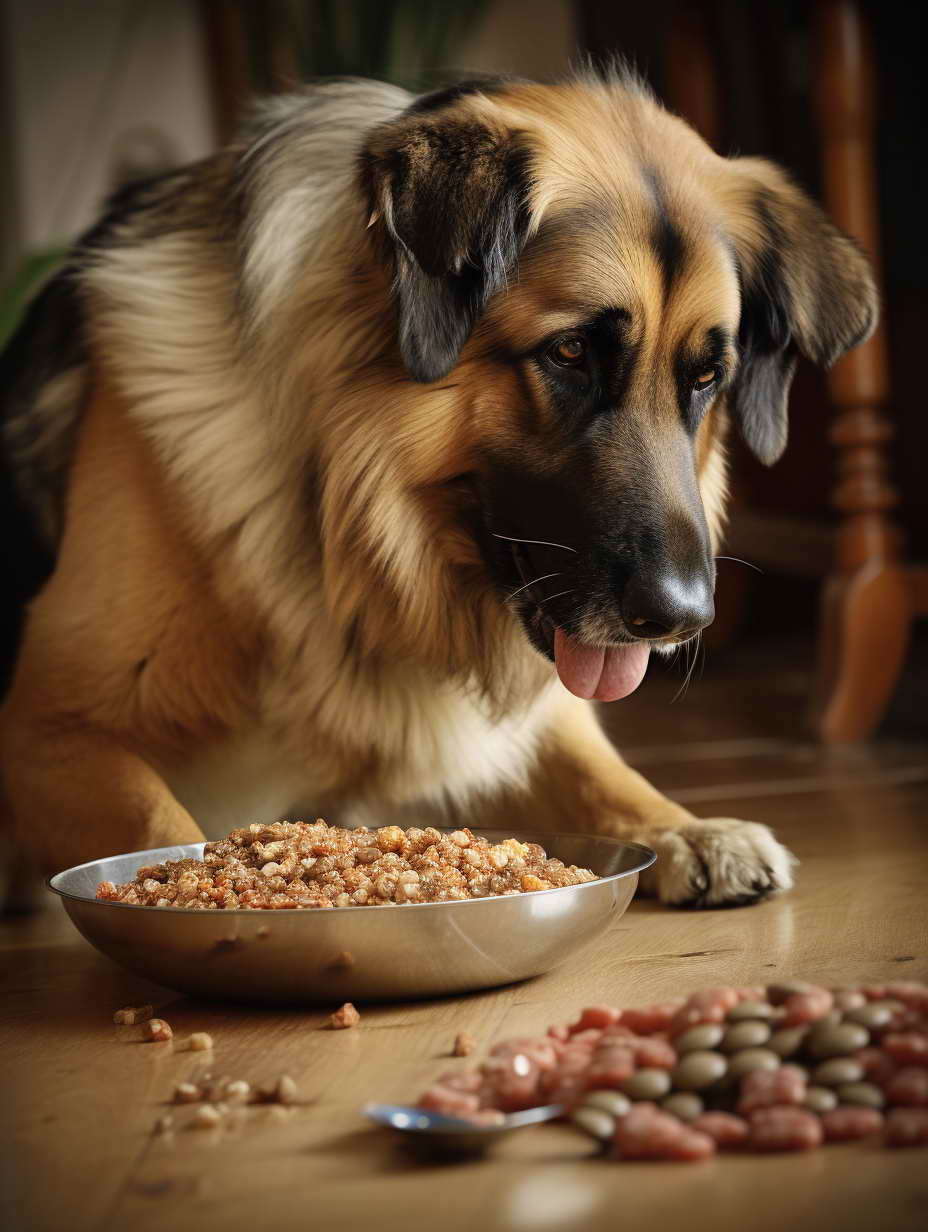What’s Wrong With Grain Free Dog Food?
In recent years, grain-free dog food has gained immense popularity among pet owners. Many believe that it’s a healthier choice for their furry companions. But is it really the right choice? In this article, we’ll delve deep into the world of grain-free dog food and explore the potential downsides and benefits. Let’s find out what’s wrong with grain-free dog food and whether it’s the right choice for your beloved pet.
Introduction
Grain-free dog food has been a subject of much debate and discussion among pet owners and veterinarians. It’s essential to make an informed decision when it comes to your dog’s diet. In this article, we will explore the reasons why some experts have raised concerns about grain-free dog food, its potential benefits, and what you should consider when choosing the best diet for your furry friend.
The Rise of Grain-Free Dog Food
Grain-free dog food has become a trendy choice for pet owners, and it’s easy to see why. Many people believe that this type of diet is more natural and healthier for dogs. Let’s explore the factors contributing to its popularity.
Health Consciousness Among Pet Owners
Today’s pet owners are more health-conscious than ever before. They want to provide their dogs with the best nutrition possible, similar to how they approach their own diets. This trend has led to the rise of specialty pet foods like grain-free options.
Allergies and Sensitivities
One of the primary reasons behind the adoption of grain-free dog food is the belief that it can alleviate allergies and sensitivities in dogs. Many pet owners claim that their dogs experience fewer digestive issues on a grain-free diet.
Marketing and Trends
The marketing of grain-free dog food has played a significant role in its popularity. Clever advertising and endorsements from pet celebrities have swayed many pet owners into trying this type of food.
What’s in Grain-Free Dog Food?
When examining the contents of grain-free dog food, it’s essential to understand the ingredients that make up this popular pet food choice. Grain-free dog food distinguishes itself from traditional dog food by replacing conventional grains like wheat, corn, and rice with alternative ingredients. These substitutions aim to provide dogs with a diet that is not only nutritious but also addresses potential dietary sensitivities. Let’s dive deeper into the components of grain-free dog food.
Protein Sources
One of the key features of grain-free dog food is its reliance on high-quality protein sources. These protein-rich ingredients play a crucial role in providing dogs with the necessary nutrients for energy, muscle development, and overall health. Common protein sources found in grain-free dog food include:
- Chicken: Chicken is a popular protein source in grain-free dog food. It is not only rich in essential amino acids but also highly digestible for dogs.
- Beef: Beef provides a hearty source of protein and is often used to create delicious and nutritious grain-free formulas.
- Fish: Fish-based dog food options, such as salmon or whitefish, are rich in omega-3 fatty acids, which promote healthy skin and a shiny coat.
- Lamb: Lamb is a flavorful protein source that is suitable for dogs with sensitivities to other meats.
These protein sources serve as the building blocks for muscle growth, repair, and overall vitality in dogs. They are essential for maintaining a healthy and active lifestyle.
Legumes and Pulses
Grain-free dog food frequently incorporates legumes and pulses into its formulations. These ingredients serve several important functions, including acting as carbohydrate substitutes and providing essential dietary fiber. Some commonly used legumes and pulses in grain-free dog food include:
- Peas: Peas are a versatile ingredient that adds both fiber and carbohydrate content to dog food. They are often used as a substitute for grains.
- Lentils: Lentils are another legume that contributes to the carbohydrate content of grain-free dog food. They are a source of plant-based protein and dietary fiber.
- Chickpeas: Chickpeas provide dogs with an excellent source of plant-based protein, fiber, and essential nutrients.
The inclusion of these legumes and pulses not only helps reduce the reliance on traditional grains but also offers a source of complex carbohydrates that can provide sustained energy for your canine companion.
Potatoes and Sweet Potatoes
Potatoes and sweet potatoes are frequently used as binding agents in grain-free dog food. These ingredients serve to add texture and structure to the kibble while also contributing some essential nutrients. Here’s how they benefit your dog’s diet:
- Potatoes: Potatoes provide carbohydrates that are easily digestible and offer a source of energy for dogs. They are often used in grain-free dog food to create a well-balanced formula.
- Sweet Potatoes: Sweet potatoes are a nutrient-dense addition to grain-free dog food. They are rich in vitamins, minerals, and dietary fiber, promoting digestive health.
These starchy vegetables enhance the overall composition of grain-free dog food and help create a well-rounded meal for your furry friend.

Potential Concerns with Grain-Free Dog Food
While grain-free dog food may seem like a healthy choice, it has raised several concerns among experts and veterinarians. Let’s explore some of these potential issues.
Taurine Deficiency
One of the most significant concerns associated with grain-free diets in dogs is the potential for taurine deficiency. Taurine is an amino acid essential for heart health in dogs. Some grain-free diets may lack sufficient taurine, which can lead to cardiac issues.
Dilated Cardiomyopathy (DCM)
DCM is a heart condition that has been linked to certain grain-free diets. While the exact cause is still under investigation, some experts believe that the absence of grains may play a role.
Lack of Dietary Variety
Feeding your dog the same grain-free food exclusively can lead to a lack of dietary variety. Dogs, like humans, benefit from a diverse diet that provides a wide range of nutrients.
Cost Considerations
Grain-free dog food is often more expensive than traditional dog food. This cost factor may limit some pet owners’ ability to provide the best nutrition for their pets.
Are There Benefits to Grain-Free Dog Food?
Despite the concerns, some pet owners and experts believe that grain-free dog food can offer certain benefits. Let’s explore these potential advantages.
Allergy Management
For dogs with known grain allergies or sensitivities, a grain-free diet may be a suitable solution. It can help alleviate itching, digestive issues, and skin problems.
Weight Management
Grain-free dog food is often higher in protein and lower in carbohydrates, which can aid in weight management for overweight dogs.
Shiny Coat and Healthy Skin
Some pet owners report that their dogs’ coats become shinier and their skin healthier on a grain-free diet.
Whats Wrong With Grain Free Dog Food – FAQs
Is grain-free dog food suitable for all dogs?
Grain-free dog food may not be suitable for all dogs. It’s essential to consult with your veterinarian before making any dietary changes for your pet.
Can grain-free dog food prevent allergies?
While grain-free dog food may help alleviate allergies in some dogs, it’s not a guaranteed solution. Individual reactions vary.
What should I look for in a grain-free dog food brand?
When choosing a grain-free dog food brand, look for one that meets the nutritional needs of your specific dog breed and age group. It’s also crucial to check for AAFCO certification.
How can I transition my dog to a grain-free diet?
To transition your dog to a grain-free diet, do so gradually. Mix the new food with the old, increasing the ratio of the new food over several days to avoid digestive upset.
Are there alternatives to grain-free dog food?
Yes, there are alternative dog food options that include grains. Consult with your veterinarian to determine the best choice for your dog’s specific needs.
Should I be concerned about the cost of grain-free dog food?
The cost of grain-free dog food can be higher than traditional dog food. Consider your budget and the specific dietary needs of your dog when making a decision.
Conclusion
In the world of pet nutrition, there are always debates and trends. Grain-free dog food has gained popularity for some valid reasons, but it also comes with potential concerns. It’s essential to weigh the benefits and risks carefully and consult with your veterinarian to make the best choice for your furry friend. Remember that no one-size-fits-all answer exists when it comes to dog food, and individual needs vary.

Leave a Reply